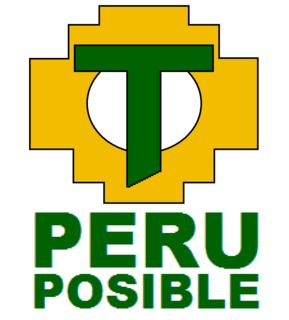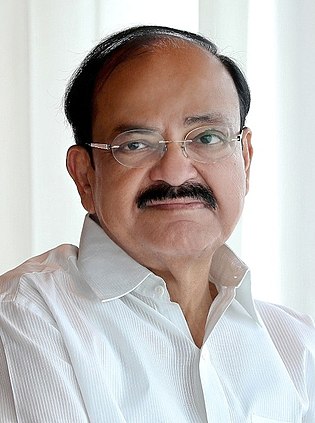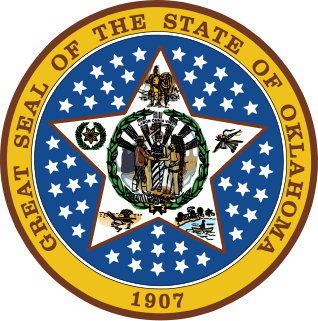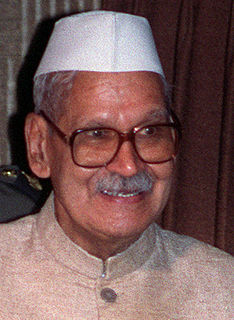
The Twelfth Amendment to the United States Constitution provides the procedure for electing the President and Vice President. It replaced the procedure provided in Article II, Section 1, Clause 3, by which the Electoral College originally functioned. The amendment was proposed by the Congress on December 9, 1803, and was ratified by the requisite three-fourths of state legislatures on June 15, 1804. The new rules took effect for the 1804 presidential election and have governed all subsequent presidential elections.

The Vice President of the United States is the second-highest officer in the executive branch of the U.S. federal government, after the President of the United States, and ranks first in the presidential line of succession. The Vice President is also an officer in the legislative branch, as President of the Senate. In this capacity, the Vice President presides over Senate deliberations, but may not vote except to cast a tie-breaking vote. The Vice President also presides over joint sessions of Congress.

The United States presidential election of 1820 was the ninth quadrennial presidential election. It was held from Wednesday, November 1, to Wednesday, December 6, 1820. Taking place at the height of the Era of Good Feelings, the election saw incumbent Democratic-Republican President James Monroe win re-election without a major opponent. It was the third and last United States presidential election in which a presidential candidate ran effectively unopposed. It was also the last election of a president from the Revolutionary generation.

The United States presidential election of 1872 was the 22nd quadrennial presidential election, held on Tuesday, November 5, 1872. Despite a split in the Republican Party, incumbent President Ulysses S. Grant defeated Liberal Republican nominee Horace Greeley. The election is notable for being the only presidential election in which a major party nominee died during the election process.

The President of India is the ceremonial head of state of India and the commander-in-chief of the Indian Armed Forces.

Possible Peru is a Peruvian political party. It was founded in 1994 by Alejandro Toledo with the original name of País Posible.

The Vice President of India is the second-highest constitutional office in India after the President. Article 63 of Indian Constitution states that "There shall be a Vice President of India." The Vice President acts as President in the absence of the president due to death, resignation, impeachment, or other situations.

The 2004 United States presidential election in West Virginia took place on November 2, 2004, and was part of the 2004 United States presidential election. Voters chose 5 representatives, or electors to the Electoral College, who voted for president and vice president.

The 2004 United States presidential election in Wyoming took place on November 2, 2004, and was part of the 2004 United States presidential election. Voters chose three representatives, or electors to the Electoral College, who voted for president and vice president.

Elections in the State of Oklahoma are established by the Oklahoma Constitution in Section 1 of Article 3. They are governed by the Oklahoma State Election Board.
The President-elect of the United States is the person who has won the quadrennial presidential election in the United States, but who has not yet been inaugurated as President of the United States. President-elect is also the honorific title accorded to this individual.

The election of president and vice president of the United States is an indirect election in which citizens of the United States who are registered to vote in one of the 50 U.S. states or in Washington, D.C. cast ballots not directly for those offices, but instead for members of the U.S. Electoral College, known as electors. These electors then in turn cast direct votes, known as electoral votes, for president, and for vice president. The candidate who receives an absolute majority of electoral votes is then elected to that office. If no candidate receives an absolute majority of the votes for President, the House of Representatives chooses the winner; if no one receives an absolute majority of the votes for Vice President, then the Senate chooses the winner.

Presidential elections in Singapore, in which the President of Singapore is directly elected by popular vote, were introduced through amendments to the Constitution of Singapore in 1991. Potential candidates for office must meet stringent qualifications set out in the Constitution. Certificates of eligibility are issued by the Presidential Elections Committee (PEC). In particular, the PEC must assess that they are persons of integrity, good character and reputation; and if they have not previously held certain key government appointments or were the chief executives of profitable companies with shareholders' equity of an average of S$500 million for the most recent three years in that office, they must demonstrate to the PEC that they held a position of comparable seniority and responsibility in the public or private sector that has given them experience and ability in administering and managing financial affairs.

The 14th indirect presidential election, in order to elect the 13th president, was held in India on 19 July 2012. The last date for filing nominations was 30 June, whereas the votes would be counted on 22 July. The two leading candidates for the presidency were former Finance Minister Pranab Mukherjee from West Bengal and former Speaker of the Lok Sabha Purno Agitok Sangma from Meghalaya.

The 2012 Indian Vice-Presidential election was held on 7 August 2012 to elect Vice-President of India. Mohammad Hamid Ansari was the incumbent and the UPA candidate. The other prime candidate was the NDA's Jaswant Singh.

Presidential elections were held on 30 July 2013 in Pakistan to elect the 12th President of Pakistan. Incumbent President Asif Ali Zardari’s term was scheduled to expire on 8 September 2013; and as such, Article 41 of the Constitution of Pakistan required the elections to be held no later than 8 August 2013. The Electoral College of Pakistan – a joint sitting of the Senate, National Assembly and Provincial Assemblies – were tasked with electing a new President to succeed President Zardari, who declined to seek a second term in office. After the Pakistan Peoples Party and its allies boycotted the presidential election, the two candidates were Mamnoon Hussain backed by the Pakistan Muslim League (N), and Wajihuddin Ahmed backed by Pakistan Tehreek-e-Insaf. Agra-born Hussain was elected president by a majority securing 432 votes. The elections were the first time in Pakistani history where a civilian President was elected while an incumbent civilian President was still in office, completing a historic and democratic transition of power that began with the 2013 General Elections.

The 1987 Indian vice-presidential election was held in mid-1987 to elect Vice-President of India, after the incumbent R. Venkataraman's resignation following his election as President. Shankar Dayal Sharma was declared elected unopposed on the final day of registration, 21 August 1987, as all other 26 nominations were rejected upon scrutiny. Should the election contested by more than one candidate, it would be occurred on 7 September 1987.
The elections to the next Vice-President of India, were held on 5 August 2017. The announcement was made by the Election Commission of India.
This article outlines the key events leading up to the 2019 Indian general election which is scheduled to take place from 11 April to 19 May 2014, starting with the prior election in 2014.

















